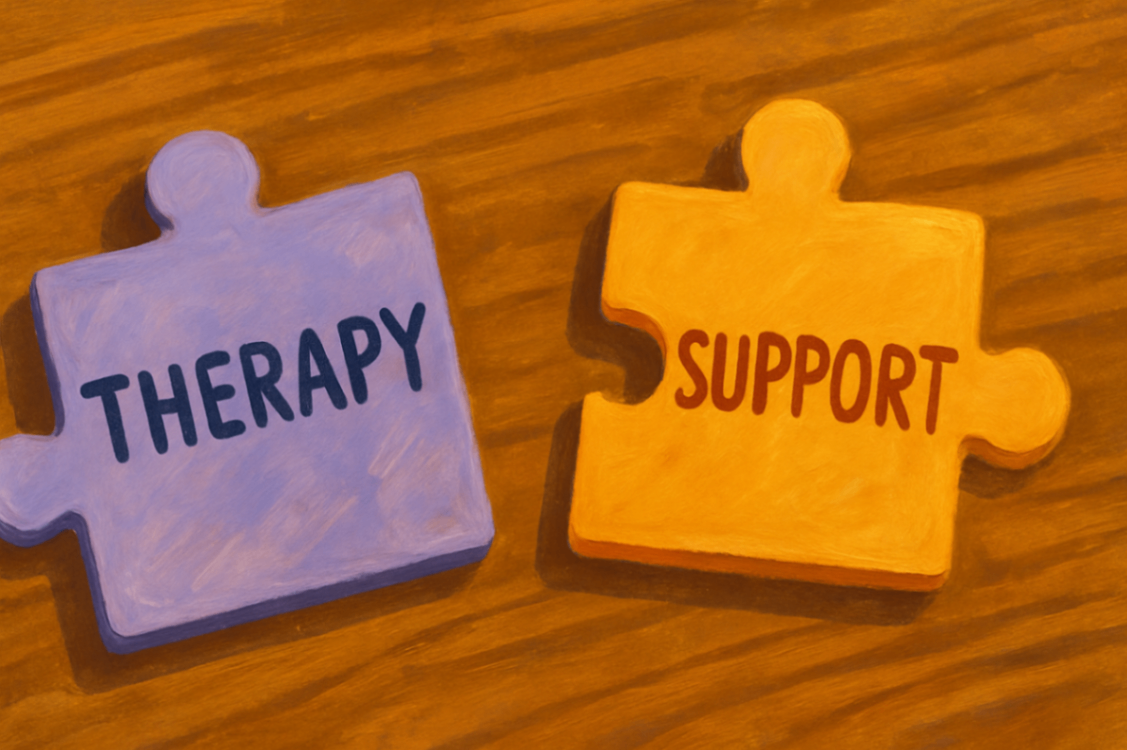
individualised ndis plans for autism: a guide to real outcomes
13 July, 2025
Key Highlights
-
The National Disability Insurance Scheme (NDIS) offers tailored plans to address the individual support needs of participants on the autism spectrum.
-
Personalised NDIS plans focus on early intervention strategies to foster skills and improve the quality of life for individuals and families.
-
Capacity building funding supports autism participants to enhance daily life and independence.
-
Autism funding under the NDIS covers therapies, equipment, and services that align with meaningful goals.
-
NDIS autism plans integrate input from health professionals, ensuring appropriateness and sustainability of support.
-
Participants benefit from substantial support designed to promote economic participation and community inclusion.
Introduction
Autism Spectrum Disorder (ASD) brings a wide range of experiences—and so do the needs of every person living with an ASD diagnosis. That’s why the National Disability Insurance Scheme (NDIS) offers individualised plans that go beyond generic supports.
An autism NDIS plan is more than just funding—it’s a personalised roadmap built around your goals, strengths, and challenges. Whether you're looking to improve communication, complete an access request form, develop independence, or navigate daily life more confidently, the NDIS for autism can help turn those goals into real, achievable outcomes.
Why Personalised Support Matters in NDIS for Autism
 No two people on the autism spectrum are the same. That’s why personalised support through the NDIS is so powerful. When you tailor an NDIS and autism plan to a person’s needs, you increase their chances of reaching real milestones—from mastering social interaction to participating in education or work.
No two people on the autism spectrum are the same. That’s why personalised support through the NDIS is so powerful. When you tailor an NDIS and autism plan to a person’s needs, you increase their chances of reaching real milestones—from mastering social interaction to participating in education or work.
Capacity Building funding under the NDIS is designed to promote long-term development. It supports therapies and strategies that help participants:
-
Communicate effectively
-
Regulate emotions
-
Build life skills
-
Participate in the community
The right plan isn’t just helpful—it’s transformative. It allows families to focus their efforts where they matter most, and participants to grow in confidence, independence, and wellbeing.
What Is an Individualised Autism NDIS Plan?
An individualised autism NDIS plan is a program that is made just for people on the autism spectrum. This plan is set up and approved by the National Disability Insurance Agency. It helps people work towards important goals in their daily life, like reaching new skills, dealing with long-term disabilities, and getting the right therapies or services.
The plan is put together by looking at each person’s autism diagnosis, what they can do, and what they want to get out of life each day. These customised plans meet each person’s needs. They go further than just standard or general ideas, and aim for real results like being more independent or joining in with others in the community.
The individualised NDIS plan helps with many parts of life, such as learning, work, or just day-to-day stuff. It tries to make sure that the right support and help goes to where it is needed the most.
This makes way for better progress both in the short term and over time, leading to a better quality of life.
If you’d like a friendly refresher on how the NDIS works before you personalise your child’s support plan, check out our Understanding NDIS for Autism—it breaks the scheme down in everyday language so you can feel confident about each step.
Creating an Individualised NDIS Plan for Autism
Creating a plan begins with a planning meeting—typically facilitated by a Local Area Coordinator (LAC) or NDIA planner. The goal is to identify your child's support needs and map out appropriate services.
To strengthen your plan:
-
Gather assessments from paediatricians, psychologists, or speech pathologists
-
Highlight how autism affects everyday life
-
Bring an autism support worker or therapist to your meeting if possible
-
Define clear goals, not just needs
An approved autism NDIS plan will link funding to practical goals, making it easier to measure progress and make adjustments over time.
Setting Meaningful Goals and Outcomes
Goals are at the heart of every good NDIS plan, especially for someone with autism spectrum disorder. To get the best results, these goals should fit what the person wants and things they do in daily life. Well-chosen goals help map out a clear path for the future. It is helpful to set goals that are easy to see and do, like learning to talk with other people or getting ready for work.
Capacity building plays a big part in reaching these goals. Some of this funding is used for therapies, such as speech or occupational therapy.
These are important for helping people be more independent in daily life activities. Most of all, the goals set in the NDIS plan should match what the participant needs right away, and also fit big-picture NDIS outcomes like better independence and getting involved with the community.
Choosing Supports Tailored to Unique Needs
Every autism NDIS plan should reflect what matters most to the participant and their family. Choosing the right supports helps unlock progress and quality of life improvements.
Common tailored supports include:
-
Early Childhood Intervention – targeted therapies for children under 9, as discussed in the Autism CRC report
-
Plan Management – budget oversight and administrative support
-
Therapeutic Supports – like speech therapy, occupational therapy, or psychology
-
Assistive Technologies – tools for communication, mobility, or sensory regulation
The flexibility of the NDIS lets you select services that are evidence-based, local, and aligned with your child’s goals.
When you’re about to finalise your tailored support blueprint, take a moment to explore the funding and eligibility details in our NDIS Funding for Autism & Eligibility guide, which answers common questions parents have.
Core Elements of an Effective NDIS for Autism Plan
 For an NDIS autism plan to work well, it must have the right mix of core funding and other support needs. These parts help people living with autism spectrum disorder face challenges in their daily life and learn new skills.
For an NDIS autism plan to work well, it must have the right mix of core funding and other support needs. These parts help people living with autism spectrum disorder face challenges in their daily life and learn new skills.
Core funding is there to help with daily activities, joining in the community, and getting needed therapies. Capacity building funding is used to help people grow skills, gain more independence, and work on goals for the future. When the plan brings together both types of funding, it covers both what people need right now and what they hope for in the years ahead.
Getting ideas and help from health professionals is also key to make sure the support is right. This way, any barriers can be removed and more chances can open up. By using these key parts, the NDIS plan builds a strong path for people on the autism spectrum to do well.
This can lead to big, real changes in their lives. And if you’re based in Liverpool and ready to put that plan into action—think clinic visits, in-home services, and community supports—you’ll find a clear, step-by-step roadmap in our Guide to Accessing NDIS Support for Autism in Liverpool tailored specifically for local families.
What Real Outcomes Can Be Achieved With NDIS and Autism Supports?
NDIS autism supports work to give people real changes that help improve their quality of life. These supports bring clear help with mental health, daily life, and economic participation. People get real benefits, and these make daily life better.
|
Real Outcomes |
Achievements |
|---|---|
|
Independence in daily tasks |
Better skills for doing daily life things like shopping or cooking. |
|
Economic participation |
Help with finding and keeping jobs. |
|
Improved mental health |
Getting access to counseling or other therapies for better mental health. |
|
Community inclusion |
Joining in events and making connections with people in the community. |
With substantial support given by NDIS, people can break through barriers. This helps them do more in their daily life and be a bigger part of the community. When the right services are given for each need, the changes people see will be big and life-changing.

Ready to Create or Update Your Autism NDIS Plan?
Getting the most out of the NDIS and autism requires the right tools, supports, and advice. You can:
-
Use the NDIS Provider Finder to locate registered autism specialists
-
Work with a plan manager to oversee budgets and payments
-
Reach out to advisory services for help gathering reports or preparing for a review
At daar, we specialise in creating meaningful, personalised outcomes for autistic children and their families across Liverpool, Casula, Prestons, Lurnea, Chipping Norton, and Moorebank.
We provide:
-
Tailored therapy and behavioural support
-
Dedicated autism support workers with real-world experience
-
Planning and review guidance for new and existing NDIS participants
-
In-clinic, in-home, and mobile services across Sydney’s southwest
Book your consultation now to start building an NDIS for autism plan that works.
Frequently Asked Questions
Can my child access NDIS funding without a formal autism diagnosis?
Children who are under six years old do not need an autism diagnosis to get funding through the early childhood approach where early childhood intervention supports are available. This way helps kids with a developmental delay. It makes sure your child can get NDIS eligibility and have the right support as soon as possible.
What supports are commonly funded for autism under the NDIS?
Supports that are usually paid for in NDIS autism plans cover things like early intervention for autistic people. They also help pay for daily life needs through core funding. Some supports focus on capacity building, like help with managing behaviour. These things help people reach goals in their growth, social life, and money situations.
How do I change or review an existing NDIS autism plan?
You can review your NDIS plan when you have a planning meeting or if you ask for a formal plan review. During these times, you may adjust your NDIS plan funds to secure the reasonable and necessary supports. You can also add the most recent support services that your providers have recommended. This helps make sure the plan will meet what you and your family need.
What are the key components of an Individualised NDIS plan for individuals with Autism?
An individual NDIS autism plan is made to match the appropriate support needs of each person. It focuses on helping with positive behaviour and daily life activities. The plan makes sure you get the best plan management for your needs. This way, your funding matches what you want for your life. It can also help you do well and become more independent.
.svg)












